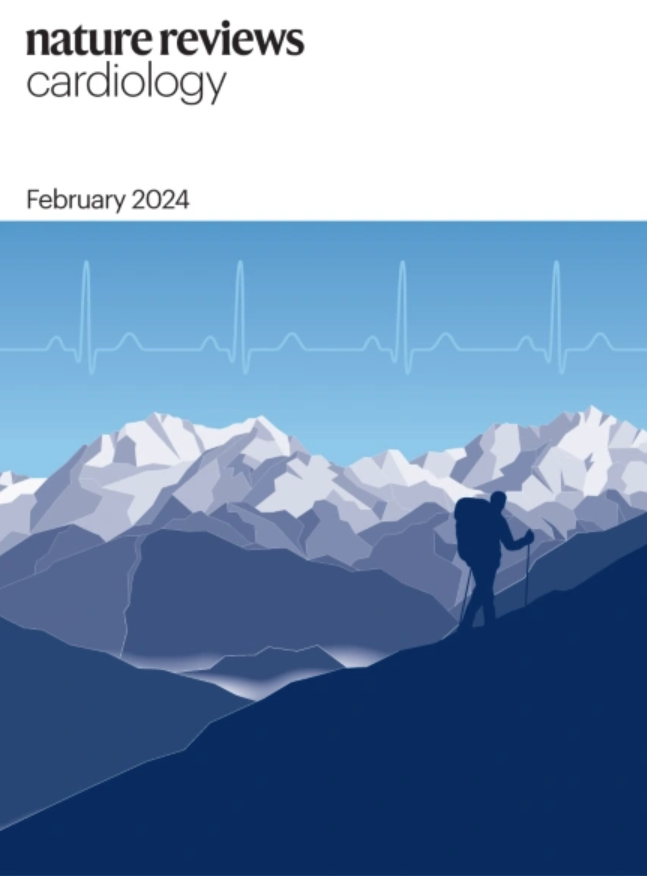Soil and water pollution and cardiovascular disease
IF 41.7
1区 医学
Q1 CARDIAC & CARDIOVASCULAR SYSTEMS
引用次数: 0
Abstract
Healthy, uncontaminated soils and clean water support all life on Earth and are essential for human health. Chemical pollution of soil, water, air and food is a major environmental threat, leading to an estimated 9 million premature deaths worldwide. The Global Burden of Disease study estimated that pollution was responsible for 5.5 million deaths related to cardiovascular disease (CVD) in 2019. Robust evidence has linked multiple pollutants, including heavy metals, pesticides, dioxins and toxic synthetic chemicals, with increased risk of CVD, and some reports suggest an association between microplastic and nanoplastic particles and CVD. Pollutants in soil diminish its capacity to produce food, leading to crop impurities, malnutrition and disease, and they can seep into rivers, worsening water pollution. Deforestation, wildfires and climate change exacerbate pollution by triggering soil erosion and releasing sequestered pollutants into the air and water. Despite their varied chemical makeup, pollutants induce CVD through common pathophysiological mechanisms involving oxidative stress and inflammation. In this Review, we provide an overview of the relationship between soil and water pollution and human health and pathology, and discuss the prevalence of soil and water pollutants and how they contribute to adverse health effects, focusing on CVD. In this Review, Münzel and colleagues describe the adverse effects of soil and water pollution, including heavy metal, pesticide, and microplastic and nanoplastic pollution, on cardiovascular health and provide an overview of the eco-disruptive causes of this pollution.


土壤和水污染与心血管疾病
健康、无污染的土壤和清洁的水支持着地球上的所有生命,对人类健康至关重要。土壤、水、空气和食物的化学污染是一个主要的环境威胁,估计导致全球 900 万人过早死亡。据全球疾病负担研究估计,2019 年有 550 万人因污染而死于心血管疾病(CVD)。大量证据表明,包括重金属、杀虫剂、二恶英和有毒合成化学品在内的多种污染物与心血管疾病风险增加有关,一些报告还表明微塑料和纳米塑料微粒与心血管疾病有关。土壤中的污染物会削弱其生产粮食的能力,导致作物杂质、营养不良和疾病,而且污染物会渗入河流,加剧水污染。砍伐森林、野火和气候变化会引发土壤侵蚀,并将螯合污染物释放到空气和水中,从而加剧污染。尽管污染物的化学构成各不相同,但它们通过涉及氧化应激和炎症的共同病理生理机制诱发心血管疾病。在本综述中,我们将概述土壤和水污染与人类健康和病理学之间的关系,并讨论土壤和水污染物的普遍性及其如何对健康产生不良影响,重点关注心血管疾病。
本文章由计算机程序翻译,如有差异,请以英文原文为准。
求助全文
约1分钟内获得全文
求助全文
来源期刊

Nature Reviews Cardiology
医学-心血管系统
CiteScore
53.10
自引率
0.60%
发文量
143
审稿时长
6-12 weeks
期刊介绍:
Nature Reviews Cardiology aims to be the go-to source for reviews and commentaries in the scientific and clinical communities it serves. Focused on providing authoritative and accessible articles enriched with clear figures and tables, the journal strives to offer unparalleled service to authors, referees, and readers, maximizing the usefulness and impact of each publication. It covers a broad range of content types, including Research Highlights, Comments, News & Views, Reviews, Consensus Statements, and Perspectives, catering to practising cardiologists and cardiovascular research scientists. Authored by renowned clinicians, academics, and researchers, the content targets readers in the biological and medical sciences, ensuring accessibility across various disciplines. In-depth Reviews offer up-to-date information, while Consensus Statements provide evidence-based recommendations. Perspectives and News & Views present topical discussions and opinions, and the Research Highlights section filters primary research from cardiovascular and general medical journals. As part of the Nature Reviews portfolio, Nature Reviews Cardiology maintains high standards and a wide reach.
 求助内容:
求助内容: 应助结果提醒方式:
应助结果提醒方式:


